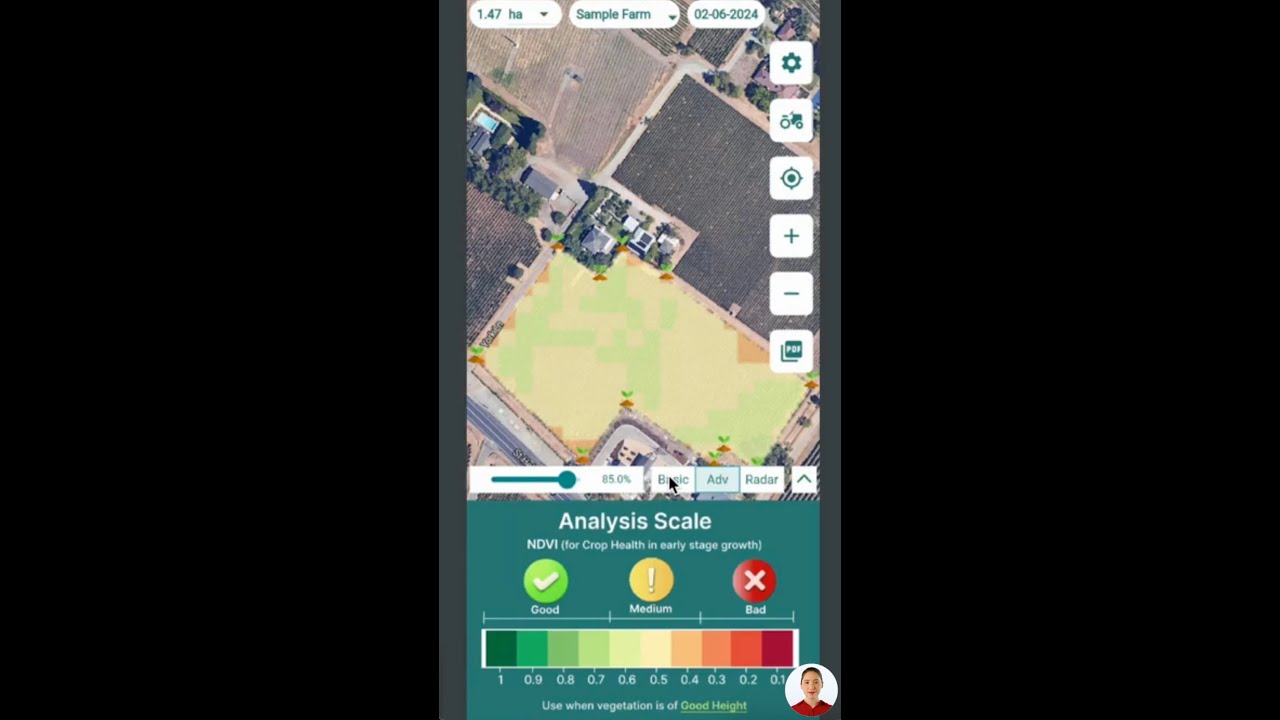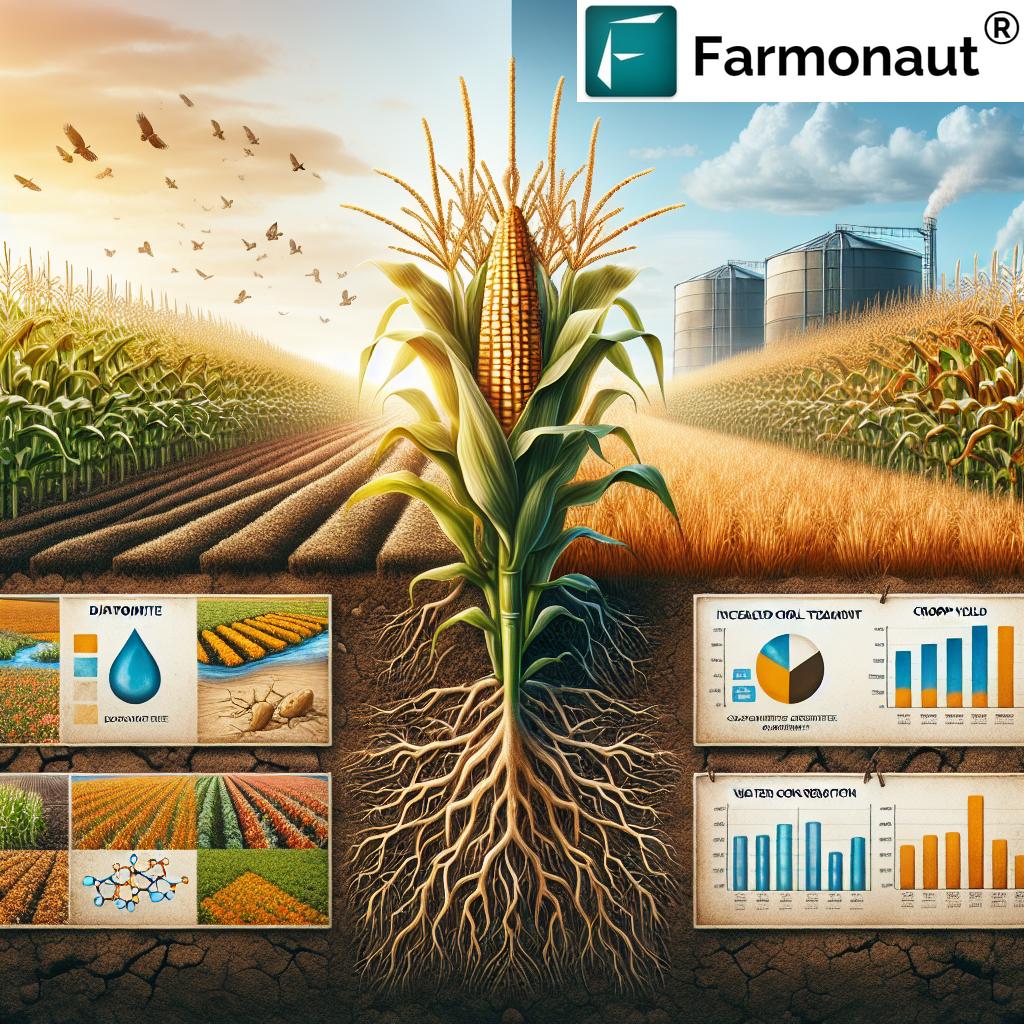Iowa Crop Progress Report: Spring Weather Impacts Fieldwork and Moisture Conditions
“Iowa farmers had 3.3 days suitable for fieldwork despite cooler temperatures and much-needed rain.”
As we delve into the latest Iowa Crop Progress Report, we find ourselves at the cusp of a new growing season, filled with both challenges and opportunities for our state’s agricultural landscape. The spring weather conditions in Iowa have played a crucial role in shaping the current fieldwork progress and moisture conditions across the state. In this comprehensive analysis, we’ll explore how these factors are influencing Iowa’s farmers and what it means for the upcoming planting season.
Overview of Spring Weather Conditions in Iowa
The start of April brought unseasonably wet conditions to much of Iowa, particularly impacting the northwest and southern regions. This weather pattern has had significant implications for fieldwork and soil moisture levels, setting the stage for the 2023 growing season.

Key highlights of the current weather situation include:
- Cooler-than-normal temperatures across much of the state
- Much-needed rainfall, providing relief to previously dry areas
- 3.3 days suitable for fieldwork during the week ending April 9th
- Statewide weekly average precipitation of 0.88 inch, above the normal 0.67 inch
These conditions have created a complex scenario for Iowa’s farmers, balancing the benefits of increased moisture with the challenges of delayed fieldwork due to cooler temperatures and wet fields.
Impact on Agricultural Fieldwork in Iowa
The recent weather patterns have had a noticeable impact on agricultural fieldwork across Iowa. While the rain has been welcome in many areas, it has also limited the ability of farmers to begin their spring planting activities in earnest.
Fieldwork Progress:
- Minimal fieldwork was accomplished during the week
- Some producers managed to plant oats, apply anhydrous, and spread dry fertilizer
- Oats seeding reached 20% completion, slightly behind last year but ahead of the five-year average
For farmers looking to optimize their fieldwork planning, tools like Farmonaut’s fleet management solution can be invaluable. This technology helps agricultural operations track and manage their equipment more efficiently, ensuring that when conditions are suitable for fieldwork, farmers can make the most of their time.
Moisture Conditions in Iowa Farmland
One of the most critical factors influencing the start of the growing season is soil moisture. The recent precipitation has significantly improved moisture conditions across much of Iowa, addressing concerns about potential drought conditions.
Current Moisture Levels:
- Topsoil moisture: 68% adequate, 4% surplus
- Subsoil moisture: 55% adequate, 1% surplus
These improved moisture conditions are crucial for the upcoming planting season, providing a solid foundation for crop germination and early growth. Farmers can monitor soil moisture levels more precisely using satellite-based technologies like those offered by Farmonaut’s crop advisory services, which provide real-time data on field conditions.
Oats Planting Progress in Iowa
Oats planting is one of the earliest indicators of spring fieldwork progress in Iowa. Despite the challenging weather conditions, farmers have made some headway in getting their oats crop in the ground.
Oats Planting Statistics:
- 20% of oats planted, eight days behind last year
- Two days ahead of the five-year average
- 2% of oats have emerged
While slightly behind last year’s pace, the oats planting progress is still ahead of the long-term average, suggesting that farmers are adapting to the current conditions and making the most of available fieldwork days.
Iowa Precipitation Data and Its Significance
“Northwest and southern Iowa experienced over 200% of normal precipitation in early April, impacting fieldwork.”
The precipitation data for Iowa in early April has been particularly noteworthy, with some regions receiving significantly more rainfall than usual. This abundance of moisture has both positive and negative implications for the agricultural sector.

Key Precipitation Data:
- Northwest and southern Iowa: Over 200% of normal rainfall
- Weekly precipitation totals: Ranged from 0.14 inch in Earling to 2.03 inches in Fonda
- Statewide weekly average: 0.88 inch, above the normal 0.67 inch
This increased precipitation has helped alleviate drought concerns in many areas but has also delayed fieldwork. Farmers can leverage tools like Farmonaut’s satellite-based monitoring to track these weather patterns and their impact on field conditions, allowing for more informed decision-making about when to begin planting and other fieldwork activities.
Iowa Soil Temperature and Its Impact on Spring Farming
Soil temperature is a critical factor in determining when it’s safe to begin planting various crops. The cooler temperatures experienced across Iowa have kept soil temperatures lower than ideal for many spring plantings.
Current Soil Temperature Data:
- 4-inch soil temperatures: Low to mid-40s statewide
- Temperatures remain below optimal levels for corn and soybean germination
These cooler soil temperatures are causing farmers to exercise patience before beginning widespread planting operations. Monitoring soil temperature trends is crucial for timing planting activities correctly, and technologies like those offered by Farmonaut can provide farmers with real-time soil temperature data to inform their decision-making process.
Iowa Weather Forecast for April: Implications for Agriculture
As we look ahead to the remainder of April, the weather forecast holds important implications for Iowa’s agricultural sector. The outlook suggests a shift towards more favorable conditions for fieldwork and planting.
April Weather Outlook:
- Warmer and drier conditions expected for mid-April
- Potential for increased fieldwork opportunities
- Gradual warming of soil temperatures
This forecasted weather pattern could provide the window of opportunity that many farmers have been waiting for to begin their planting operations in earnest. However, it’s crucial to balance the desire to get into the fields with the need to ensure optimal soil conditions for seed germination and early crop development.
Farmers can stay ahead of changing weather patterns by utilizing Farmonaut’s weather forecasting tools, which provide detailed, localized weather predictions to aid in agricultural planning.
Iowa Drought Conditions: A Comparative Analysis
One of the most positive aspects of the recent weather patterns in Iowa has been the improvement in drought conditions compared to the previous year. The active weather pattern experienced throughout March has significantly contributed to this improvement.
Drought Condition Improvements:
- Reduced areas of severe and extreme drought
- Increased soil moisture levels across much of the state
- Better starting conditions for the 2023 growing season compared to 2022
This improvement in drought conditions provides a more optimistic outlook for the upcoming growing season. However, it’s important for farmers to continue monitoring moisture levels and implementing water conservation practices where necessary. Tools like Farmonaut’s carbon footprinting service can help farmers track their water usage and overall environmental impact, contributing to more sustainable farming practices.
Iowa Spring Farming Outlook: Challenges and Opportunities
As Iowa’s farmers look ahead to the 2023 growing season, they face a mix of challenges and opportunities shaped by the current weather conditions and agricultural landscape.
Key Factors Influencing the Spring Farming Outlook:
- Improved moisture conditions compared to last year
- Delayed fieldwork due to cool and wet conditions
- Potential for a compressed planting window
- Importance of precision timing for planting and fieldwork
While the improved moisture conditions provide a positive starting point, farmers will need to be strategic in their approach to the planting season. Utilizing advanced technologies and data-driven decision-making will be crucial for maximizing productivity in what could be a shorter-than-usual planting window.
Comparative Analysis: Current Year vs. 5-Year Average
To provide a clearer picture of how this year’s conditions compare to historical trends, we’ve compiled a comparative table of key agricultural metrics:
| Metrics | Current Year | 5-Year Average |
|---|---|---|
| Days Suitable for Fieldwork | 3.3 | 4.2 |
| Topsoil Moisture (% Adequate) | 68% | 62% |
| Oats Planting (% Complete) | 20% | 18% |
| Weekly Average Precipitation (inches) | 0.88 | 0.67 |
| Soil Temperature (°F) | Low to mid-40s | Mid to high-40s |
This comparison highlights that while some metrics, such as oats planting and topsoil moisture, are slightly ahead of the five-year average, others, like days suitable for fieldwork, are lagging. These differences underscore the unique challenges and opportunities presented by the current growing season.
Leveraging Technology for Improved Agricultural Decision-Making
In the face of these challenging and dynamic conditions, technology plays an increasingly crucial role in helping farmers make informed decisions. Advanced agricultural technologies, such as those offered by Farmonaut, provide farmers with powerful tools to navigate the complexities of modern farming.
Key Technological Solutions:
- Satellite-based crop monitoring for real-time field condition assessments
- AI-driven weather forecasting for more accurate short and long-term planning
- Precision agriculture tools for optimizing resource use and improving yields
- Data analytics for better decision-making throughout the growing season
By integrating these technologies into their operations, Iowa farmers can better adapt to changing weather patterns, optimize their planting schedules, and make more informed decisions about resource allocation. This technological approach to farming not only helps improve productivity but also contributes to more sustainable and environmentally friendly agricultural practices.
The Role of Precision Agriculture in Iowa’s Farming Future
As we look to the future of farming in Iowa, precision agriculture stands out as a key factor in helping farmers navigate the challenges posed by variable weather conditions and the need for increased productivity. Precision agriculture techniques, powered by advanced technologies like those offered by Farmonaut, allow farmers to make data-driven decisions that optimize resource use and improve crop yields.
Benefits of Precision Agriculture:
- Improved resource efficiency (water, fertilizer, pesticides)
- Enhanced crop health monitoring and management
- Better adaptation to changing weather patterns
- Increased overall farm productivity and profitability
By embracing precision agriculture, Iowa farmers can not only address the immediate challenges posed by this year’s weather conditions but also position themselves for long-term success in an increasingly competitive and environmentally conscious agricultural landscape.
Sustainable Farming Practices in the Face of Climate Variability
The variability in weather patterns highlighted in this year’s Iowa Crop Progress Report underscores the importance of adopting sustainable farming practices. These practices not only help farmers adapt to changing conditions but also contribute to the long-term health of Iowa’s agricultural lands.
Key Sustainable Farming Practices:
- Cover cropping to improve soil health and reduce erosion
- Conservation tillage to preserve soil structure and moisture
- Precision fertilizer application to reduce runoff and improve efficiency
- Integrated pest management to reduce reliance on chemical pesticides
Implementing these practices can help Iowa farmers build resilience against weather variability while also improving the overall sustainability of their operations. Tools like Farmonaut’s carbon footprinting service can assist farmers in tracking the environmental impact of their practices and identifying areas for improvement.
The Economic Implications of Weather Variability for Iowa Agriculture
The weather conditions outlined in the Iowa Crop Progress Report have significant economic implications for the state’s agricultural sector. Understanding these implications is crucial for farmers, agribusinesses, and policymakers alike.
Economic Considerations:
- Potential delays in planting could impact crop yields and quality
- Improved moisture conditions may reduce irrigation costs
- Variability in weather patterns may increase the importance of crop insurance
- Adoption of precision agriculture technologies could lead to long-term cost savings
For farmers looking to mitigate financial risks associated with weather variability, tools like Farmonaut’s crop loan and insurance services can provide valuable support. These services offer satellite-based verification for crop loans and insurance claims, helping to streamline the process and reduce the potential for fraud.
Looking Ahead: Preparing for the 2023 Growing Season
As Iowa farmers prepare for the 2023 growing season, the insights provided by the Iowa Crop Progress Report serve as a valuable guide. While challenges exist, particularly in terms of cooler temperatures and delayed fieldwork, there are also reasons for optimism, including improved moisture conditions and the potential for a productive growing season ahead.
Key Preparatory Steps for Farmers:
- Monitor soil temperatures and moisture levels closely
- Be prepared to act quickly when conditions are favorable for planting
- Utilize precision agriculture tools to optimize resource use
- Stay informed about weather forecasts and agricultural advisories
- Consider implementing sustainable farming practices to build long-term resilience
By staying informed, leveraging technology, and adopting sustainable practices, Iowa’s farmers can position themselves for success in the face of weather variability and other challenges.
Conclusion: Navigating Challenges and Seizing Opportunities
The latest Iowa Crop Progress Report paints a picture of a agricultural landscape in transition, with farmers adapting to cooler temperatures, increased moisture, and the resulting impacts on fieldwork and planting progress. While these conditions present challenges, they also offer opportunities for those who are prepared to leverage advanced technologies and sustainable farming practices.
As we move forward into the 2023 growing season, the resilience and adaptability of Iowa’s farming community will be key to navigating the complexities of modern agriculture. By embracing precision farming techniques, sustainable practices, and data-driven decision-making, Iowa’s farmers can not only overcome the immediate challenges posed by this year’s weather conditions but also build a stronger, more resilient agricultural sector for the future.
FAQ Section
Q: How has the recent weather affected fieldwork in Iowa?
A: Cooler temperatures and increased rainfall have limited fieldwork to 3.3 days suitable for field activities, slightly delaying some planting and fertilizer application tasks.
Q: What is the current status of oats planting in Iowa?
A: Oats planting has reached 20% completion, which is behind last year’s pace but ahead of the five-year average.
Q: How do the current moisture conditions compare to previous years?
A: Current moisture conditions are improved compared to last year, with 68% of topsoil moisture rated as adequate, providing a better starting point for the growing season.
Q: What is the outlook for the remainder of April in terms of weather?
A: The forecast for mid-April suggests warmer and drier conditions, which could provide more opportunities for fieldwork and planting activities.
Q: How can farmers adapt to the current weather conditions?
A: Farmers can adapt by closely monitoring soil temperatures and moisture levels, utilizing precision agriculture tools, and being prepared to act quickly when conditions are favorable for planting.
Resources for Iowa Farmers
To help Iowa farmers navigate the challenges and opportunities presented by the current agricultural conditions, here are some valuable resources:
- Farmonaut Mobile App – For real-time crop monitoring and agricultural insights
- Farmonaut API – For developers looking to integrate agricultural data into their applications
- API Developer Docs – Comprehensive documentation for the Farmonaut API
Download the Farmonaut app for your device:
Earn With Farmonaut: Join our affiliate program and earn while helping farmers optimize their operations. Learn more about the Farmonaut affiliate program.
Earn 20% recurring commission with Farmonaut’s affiliate program by sharing your promo code and helping farmers save 10%. Onboard 10 Elite farmers monthly to earn a minimum of $148,000 annually—start now and grow your income!
Farmonaut Subscriptions
By leveraging these resources and staying informed about the latest agricultural trends and technologies, Iowa farmers can position themselves for success in the face of changing weather patterns and other agricultural challenges.
















